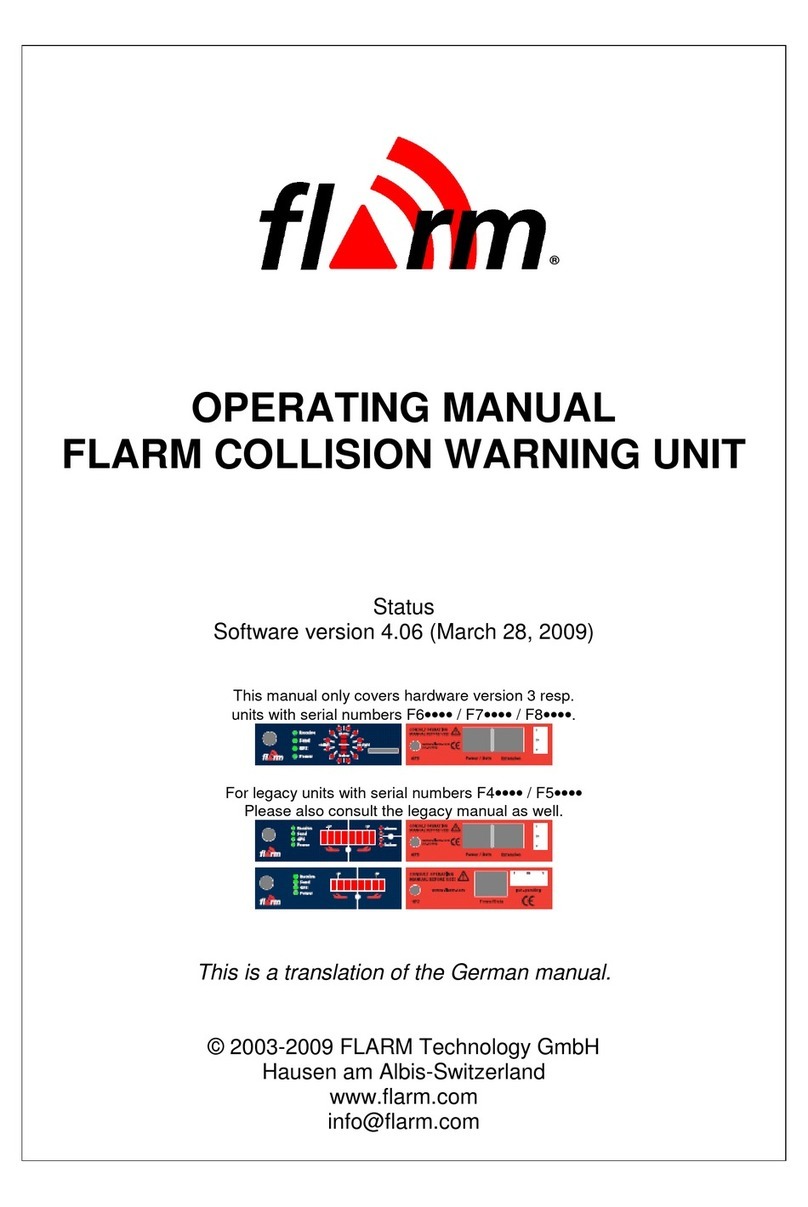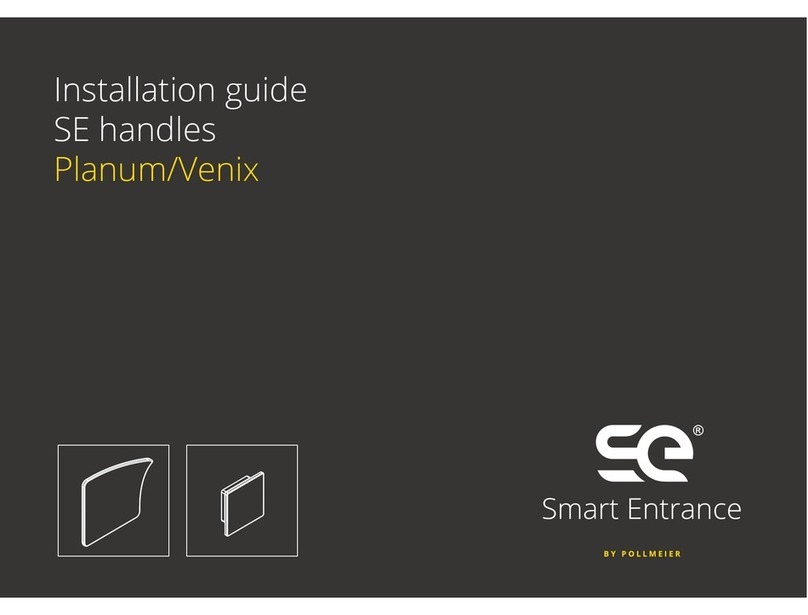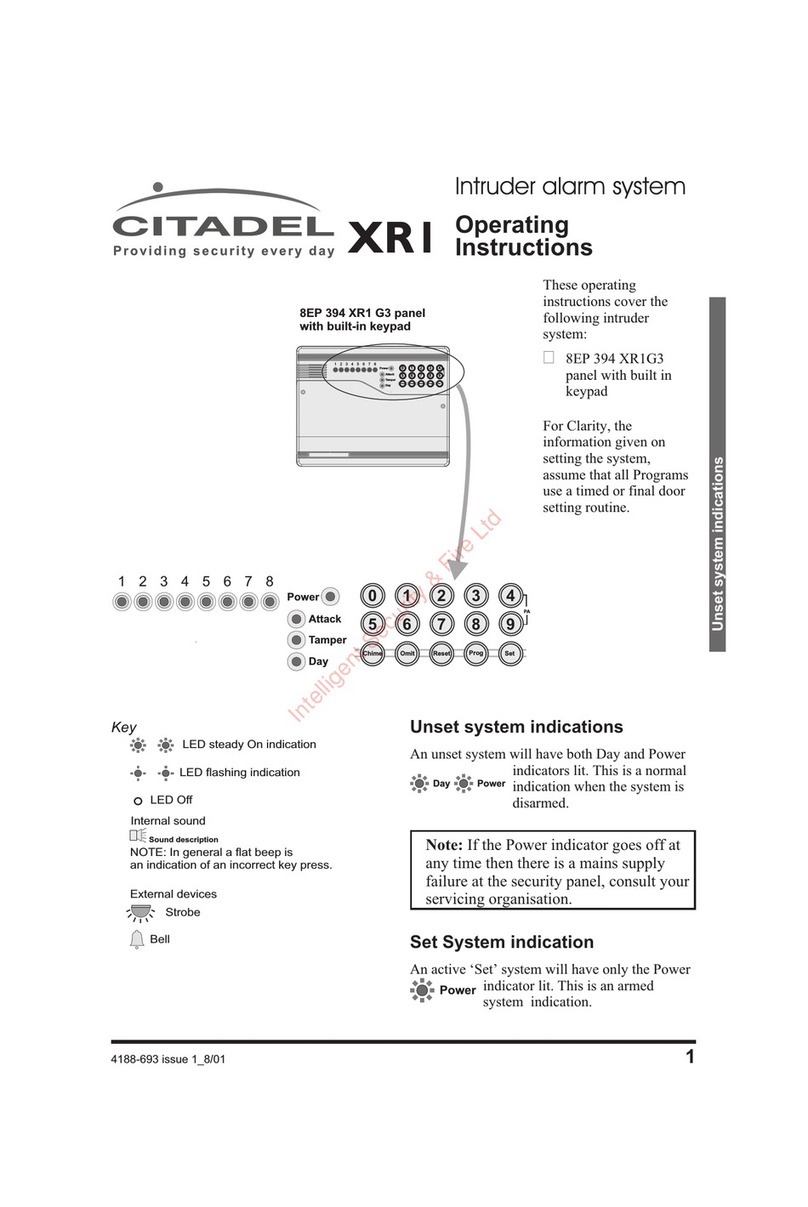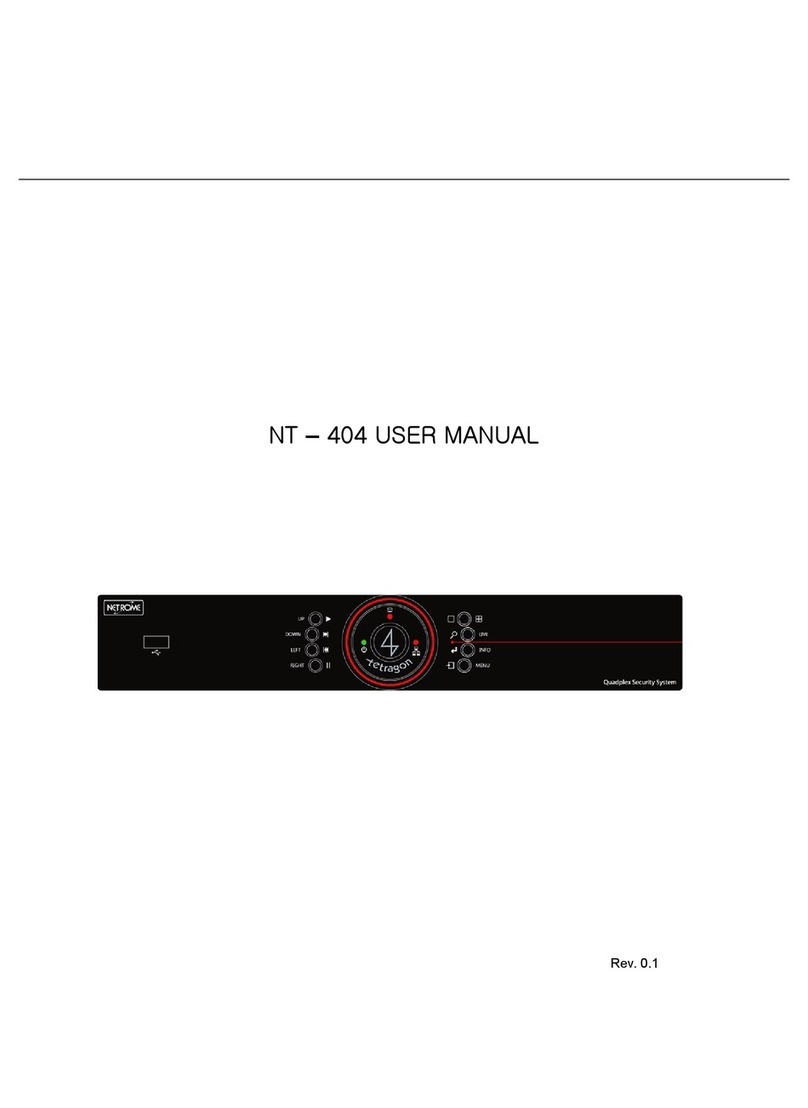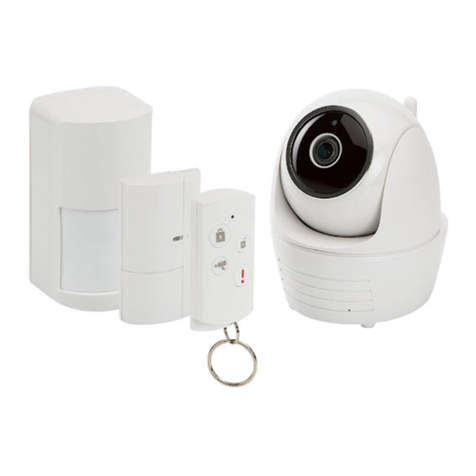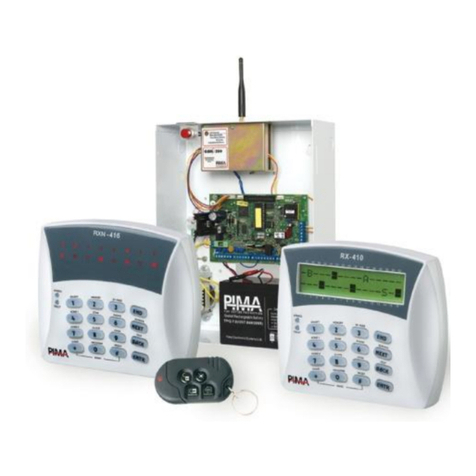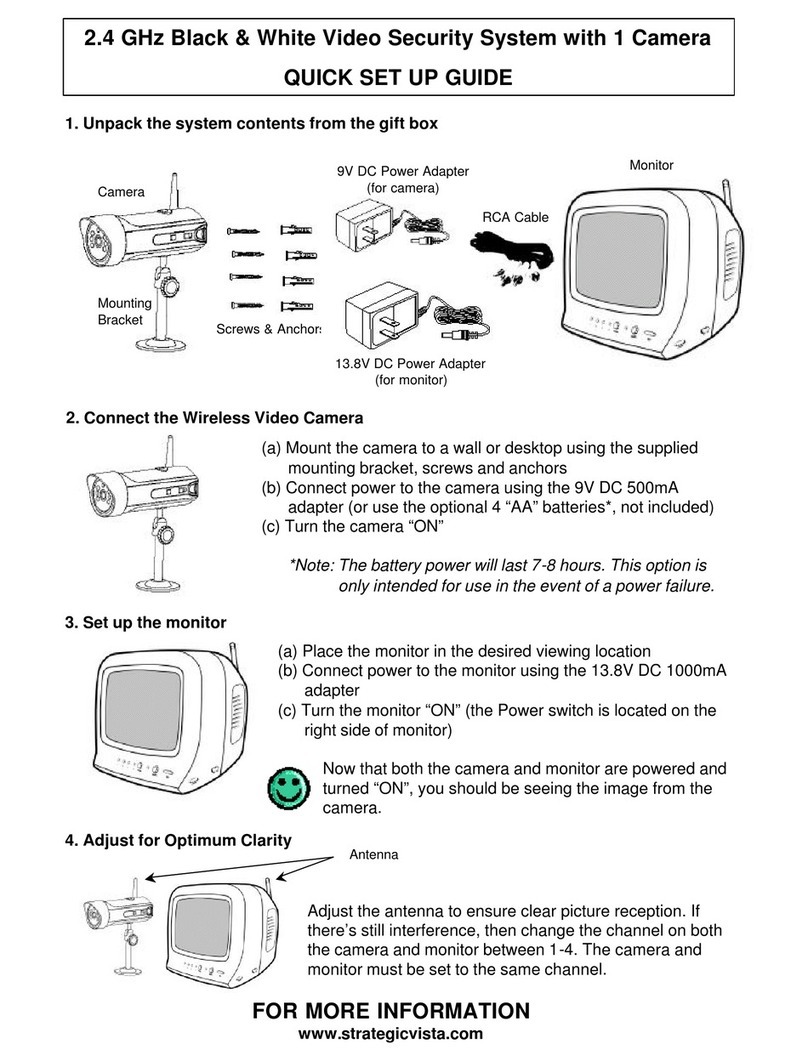FLARM PowerFLARM Portable User manual

PowerFLARM Portable Manual International v.22
1
PowerFLARM Portable
Manual
Version 22 (International)
November 15, 2016

PowerFLARM Portable Manual International v.22
2
Contents
Introduction .................................................................5
Installation ...................................................................7
General Advice on Installation........................................................... 7
Housing ....................................................................................................... 9
Connections............................................................................................ 10
Overview ....................................................................................................10
Power Connector....................................................................................10
Power and Data Port Connector (IGC standard)....................11
Audio............................................................................................................12
Communications Antennas................................................................13
GPS-System............................................................................................. 14
Operation with an internal GPS Antenna...................................14
Operation with an external GPS Antenna ..................................14
FLARM-Device Communication ..................................................... 15
Audio ......................................................................................................... 15
Micro SD-Card ....................................................................................... 17
Insertion and Removal ........................................................................17
Power Supply......................................................................................... 18
Power Supply using the Aircraft's own Electrical Power
System .........................................................................................................18
Power Supply Using Batteries or Rechargeable Batteries .18
Battery Insertion....................................................................................19
Rechargeable internal Batteries.....................................................19
Technical Data....................................................................................... 20
Operation................................................................... 21
General Advice on Operation .......................................................... 21
Use.................................................................................................................21
Compatibility ...........................................................................................21
Radio Range and Reception..............................................................21
Position Determination.......................................................................22
Flight Path Calculation.......................................................................22

PowerFLARM Portable Manual International v.22
3
Data Protection ......................................................................................23
Limitations................................................................................................23
Certification..............................................................................................23
Transport and Storage........................................................................23
Further Questions or Problems .......................................................23
Start-Up.................................................................................................... 24
Fault Reporting and other Information...................................... 24
Operation................................................................................................. 25
Normal Operation................................................................................ 25
Operation with Mode S/C transponder ...................................... 27
Operation on ground .......................................................................... 28
Collision Warnings .............................................................................. 28
Warning Presentation.........................................................................28
Information about Warnings...........................................................29
ADS-B alerts ........................................................................................... 30
Device information and configuration Menu............................ 31
Menu Structure.......................................................................................32
Essential Settings Prior to First Flight......................................... 34
Selection of Aircraft Type...................................................................34
Selection of Battery Type ...................................................................34
Transponder.............................................................................................34
ICAO Address............................................................................................34
Flight recorder ............................................................ 36
Feature licences.......................................................... 36
Device identification........................................................................... 37
Device update............................................................. 38
Software, licence and/or obstacle database update.............. 38
Mandatory firmware update........................................................... 38
Legal Notes................................................................. 39
Product Warranty................................................................................ 39
Limitations.............................................................................................. 39
Legal Liability ........................................................................................ 40
Conformity Declaration..................................................................... 42

PowerFLARM Portable Manual International v.22
4
RF Radiation Hazard Warning........................................................ 43
Maximum Antenna Gain.................................................................... 43
Industry Canada Notice and Marking.......................................... 44
Credits....................................................................................................... 44

PowerFLARM Portable Manual International v.22
5
Introduction
A PowerFLARM™ device draws its position and movement
information from an internal GPS-receiver. The position measured
is rendered more accurate by an integral pressure sensor. The
device calculates the predicted flight path and transmits this
information as a short, low-power digital signal burst at one-
second intervals together with a unique identification code. At the
same time, the device receives similar signals from PowerFLARM
devices installed in other aircraft and within radio range, or from
aircraft equipped with ADS-B-OUT (1090ES), Mode-C and Mode-S
transponders (if interrogated by ground radar or TCAS). The
device compares the signals received with its own projected flight
path. An optional, additional feature will be for the device to
compare its own projected flight path with the positions of known
fixed obstacles (e.g. cables, aerials, cable railways, avalanche
detonation sites) held in the device's data base.
If the device determines one or more threats of a dangerous
conflict with another aircraft or obstacle, it warns the user of the
most dangerous threat as per the internal calculation. Acoustic
warnings are issued via a warning bleeper and headset audio
output, also an optical warning via an LCD display. These signals
indicate the height of the threat, the direction from which it has
been detected, and the altitude difference. For gliders, during
thermalling, a different calculation algorithm is applied from that
used in straight flight. The GPS- and collision threat data received
are also fed to a serial data port output for use by other devices
such as an external display and PDA. Compatible equipment is
available from a number of suppliers.

PowerFLARM Portable Manual International v.22
6
Warnings are issued in accordance with the time remaining to a
possible collision, not the geometric distance between the aircraft.
The first warning is typically issued between 19 and 25 seconds
prior to the calculated possible collision with aircraft or obstacle;
the second is issued 14 to 18 seconds beforehand, and the third 6
to 8 seconds in advance. Warnings are sustained as long as the
threat remains relevant. Depending upon updated data and
prediction, the threat may be downgraded or deleted. Warnings
are selective, i.e. they are only issued if the algorithms detect a
high probability of a dangerous convergence in the immediate
future.
PowerFLARM also warns about obstacles on the ground (cables,
masts) if the respective database is installed. Databases are
available for purchase on http://shop.flarm.com.
Communications between PowerFLARM / FLARM devices employ
a proprietary, copyright protected protocol in different frequency
bands allocated by region. Effective range depends upon the
position in which device and antenna is fitted.
The communications system between devices is protected against
unauthorised access. The design is patent protected. There is no
public access to the protocol. Any unlicensed use, copying,
distribution, conversion, replication, de-compiling, reverse
engineering, or further transmission of knowledge so acquired
relating to the system components or software, in whole or in
part, is forbidden and will result in legal enforcement action.
Technical data may be changed at any time and without prior
warning. Some named functions are not provided in all versions of
the device, but may be provided at extra cost or for a recurring
fee.

PowerFLARM Portable Manual International v.22
7
Installation
General Advice on Installation
Installation and operation is on a non-interference and non-
hazard basis, and may not be allowed to endanger the safe
operation of certificated equipment that is either necessary or
required by regulation for safe flight. Installation must comply
with official requirements.
The device must be so secured that the pilot can see the displays,
hear the acoustic warnings, and operate the turning-button. The
device must not obstruct the pilot in his operation of the aircraft
(including emergencies); in particular at all times it must not
obstruct his view of the sky, even in the event of serious vibration
or acceleration. The device is not suitable for use in conjunction
with night vision equipment or for night flying.
Ideally, the device will be fitted to the instrument panel glare-
shield or cockpit sidewall. If the device internal display is in use,
the rear face of the device with cable connectors must face the
direction of flight. If the device is coupled to an external display
with controls, it can be installed in another position or point in a
different direction. Usually, this will require the use of separate
communications and GPS aerials.
No antenna may be in contact with any object which might be the
source of electrostatic discharge. Stub and whip antennas must
not touch any object, e.g. the cockpit windscreen. The device will
not operate properly in the absence of an antenna or if the
antenna is not properly screwed tight; the device cannot self-test
for correct antenna function.
For updates, configuration and flight data evaluation it is helpful if
the device is installed such that the data connectors and the
microSD-reader are easily accessible or reachable with an
extension cable. The serial number must be known for software
updates.

PowerFLARM Portable Manual International v.22
8
It is advisable that the device is so fitted to the aircraft that the
turn-button cannot be inadvertently pressed during entry to or
egress from the aircraft. Should the device or any associated
components be fitted to a part of the aircraft that will be
jettisoned in an emergency, suitable break points should be
incorporated to prevent any interference with the jettison
sequence.
Cables must not be folded or placed under tension. Adequate
space must be left for the cable connectors. Cables for data and
external devices must be shortened as necessary: to prevent the
occurrence of inductive effects they may not be coiled. Only a
single device may be installed in each aircraft.
The device and any associated aerials should be located as far
away as possible -- at least 30 cm (1 ft) -- away from any other
GPS aerial and the magnetic compass.
After installation, an inspection must be made to ensure that the
device does not interfere with any mechanical, electrical,
electronic (radio) or magnetic (e.g. compass) system, and this fact
must be recorded in the aircraft documents. In addition, the
aircraft documents must bear a record of serial number and
Software Version Number. If employed in a fixed installation, the
Means of Compliance must be recorded in the aircraft
documentation, and an AFM Supplement is to be carried on board
the aircraft. The user must ensure that installation and operation
complies with all applicable law in the usage location’s
jurisdiction.
In case of questions or problems, please contact your dealer
directly.

PowerFLARM Portable Manual International v.22
9
Housing
The lower face of the polycarbonate housing has two threaded
screw holes, so that the device may be easily secured using two
metric M4 screws (max. 10 mm long). The device must be fitted to
a flat surface and the housing not subjected to any mechanical
stress. Several types of adapter fixtures are available.
The housing can also be secured using 3M DualLock industrial
fasteners, which can be secured and released several times. Users
should note that the adhesive used on 3M DualLock is
exceptionally strong and may not easily release. The adhesive tape
should not cover the battery compartment lid, but should be
applied elsewhere on the housing.
The housing is not air or watertight and users should avoid the
ingress of solid particles and liquids. Should the device get moist,
it must be completely dried prior to further use. If the device
becomes wet, it may be permanently damaged and rendered
unusable; no guarantee claim will be accepted for any device
damaged by moisture. Should the device be suddenly cooled this
may result in the formation of internal condensation. The housing
may only be cleaned using a slightly moist non-abrasive cloth
without a chemical cleaning agent. The housing does not resist
scratches or abrasion.
The plastic housing is black to reduce glare and has been tested in
the temperature range -10 °C to +60°C. Care should be taken to
avoid over-heating due to direct or indirect sunshine, in particular
because the housing can become deformed at temperatures above
+84 °C without any mechanical tension, and with mechanical
tensions also at lower temperatures. The device must not be
locally over-heated by exposure to focused sunrays, and care is
required when cockpit doors or canopies have been opened (risk
of fire to due lens effect). High temperatures significantly reduce
battery runtime when rechargeable batteries are used.

PowerFLARM Portable Manual International v.22
10
Connections
Overview
Power Connector
Supplied power must be 12 V DC nominal at 500mA (between 8V
and 23V DC).
This power socket mates with a PP-012 connector (DigiKey part#
CP-012-ND, Radio Shack Adaptaplug Tip „A“ 273-334). VDC(+) is
on the inside, GND outside. A minimum of 12V is needed to charge
the batteries (Radio Shack AC-DC Power Adapter 273-357)
Ensure any external power source is only connected
in case no or only rechargeable batteries are in the
device. External power might damage non-
rechargeable batteries (risk of leakage).

PowerFLARM Portable Manual International v.22
11
Power and Data Port Connector (IGC standard)
The 8-pin RJ45-socket accepts and retains an 8-pin connector.
Except for pin #3, the pin-out is in accordance with IGC GNSS FR
specifications http://www.fai.org/gnss-recording-devices/igc-
approved-flight-recorders
Please note that IGS’s pin numbering is reverse to industry
standards. VDC and GND are internally connected to the above
‘Power Connector’
Do not use 6 or 4 pin RJ-12/11 connectors as it will cause
permanent damage to the socket.
An 8-pin ribbon cable with an RJ45 push-fit connector or an 8-pin
twisted-pair patch cable with RJ45 may be used. Suitable cables
are obtainable from retailers.
1: +12 V DC nominal (+8 to +23V DC)
2: +12 V DC nominal (+8 to +23V DC)
3: Device supplies + 3V DC
4: GND
5: TX (RS232): only 1 user!
6: RX (RS232): only 1 user!
7: GND
8: GND
Pin 1 Pin 8 (view from rear)
For 8-pin cables pins 1=2 and pins 7=8 should be linked. If the
other wires are not to be used, they should be individually
insulated and may not be soldered together or twisted in pairs.
If the incoming power supply uses the Power/Data
Port connection, special attention must be given to
the instructions given in the chapter in this
handbook entitled Power Supply.

PowerFLARM Portable Manual International v.22
12
The (typically transparent) plug must be examined to determine
the cable colour coding so the open cable end may be correctly
configured. On patch cables the neighbouring wires of Pins 1/2,
3/4, 5/6 and 7/8 are usually twisted together. Neighbouring wires
are usually of the same colour, though one of the two colours
alternates with white.
On Pin 5, PowerFLARM can transmit a combination of GPS, traffic
and alarm information to various types of devices (e.g., external
display, flight computer, logger). The type of data output and the
communication parameters (Baud rate) can be configured from
the Menu or by commands on the Data Port itself.
As of Firmware version 2.00, PowerFLARM implements versions
3, 5 and 6 of the Data Port specification with GPS/FLARM
proprietary NMEA0183 or GARMIN®-TIS data. The connected
device can select the protocol version it requires.
Please refer to the Data Port Specification and it’s addendum
available from http://www.flarm.com/support/manual/ for
details.
If you connect a device to the Data Port, make sure
that the installation conforms to the requirements
set forth in the Data Port Specification.
Do not connect more than one device at the same
time.
Audio
The audio signal is a standard de-coupled aviation signal of no
more than 1 V. The connector is a standard 3.5 mm jack plug.
Availability of the audio signal is subject to purchase and
installation of the AUD feature licence. Audio signal is not
available while operating on batteries.

PowerFLARM Portable Manual International v.22
13
Communications Antennas
The primary communications antenna for the
FLARM/PowerFLARM device communication must be connected
to the socket labelled ‘FLARM A’.
For proper operation of devices with PCAS/ADS-B receiver (non-
Pure), the included ADS-B antenna (blue label) must be carefully
and tightly screwed to the socket labelled ‘ADS-B’.
Make sure the FLARM antenna and the ADS-B
antenna (blue band) are not accidentally swapped!
The installation has a great influence upon both transmission and
the reception range achieved, and thus requires careful
consideration. The antennas must be vertical to ensure
unimpeded emission especially to the front, and to the sides. Users
are advised not to install the device within or under the
instrument panel without external antennas. Horizontal or non-
upright antenna presentation is unacceptable. No electrically
conducting surfaces (e.g. metal, carbon fibre) should be located
over or immediately alongside the antennas. The antennas must
not be subjected to physical pressure and may not be bent. Ensure
the antenna does not touch the cockpit windscreen.
If a second flat FLARM/PowerFLARM device
communications antenna with the extension cable
(used for reception of FLARM/PowerFLARM device
signals only, included in shipments to the USA) is
used, it should be connected to socket labelled
‘FLARM B’; ensure it is located at least 0.6 meters (2
ft) from the device.
Usage of FLARM B is subject to purchase and installation of the
RFB feature licence.
Alternative offset antennas, external antennas and antenna
extension cables (50Ω on normal SMA) can be obtained from
retailers. The installation must be within a Zone 2A or 3 as defined
by DO-160/F Section 23.

PowerFLARM Portable Manual International v.22
14
GPS-System
The GPS system in the device is subject to the limitations found in
typical GPS applications. It is not aviation certified.
The device will not work without adequate GPS
reception.
The device can be operated using both the GPS antenna within the
housing and with an external GPS antenna (not supplied)
connected to the MCX socket. Connecting an external antenna
automatically deactivates the internal antenna.
Operation with an internal GPS Antenna
When operating with the internal GPS antenna, the device
presentation must be unhindered to the sky ahead and sides.
Further, the upper side of the device must not be covered.
Operation with an external GPS Antenna
The antenna should be located in an upright position such that it
has an unhindered presentation to the sky, including when the
aircraft is in a turn. There should be no electrically conducting
surfaces (e.g. metal, carbon fibre) over or immediately alongside
the antenna. Ideally, the antenna will sit atop the instrument panel
coaming. Conducting surfaces under the antenna may have a
positive effect upon antenna function. If more than one GPS
antenna is present, it is recommended that they are at least 25 cm
(1 ft) apart; the same holds good for separation from the
PowerFLARM device communications antenna.

PowerFLARM Portable Manual International v.22
15
FLARM-Device Communication
The FLARM/PowerFLARM device radio communication is made
using a license free frequency band known as ISM/SRD band. This
means that the band is also used by other applications all of which
must meet the same restrictions in transmission power, duty
cycle, etc.). The device has no exclusive rights to use this
frequency band, so there is no guarantee that reception will be
free from interference by other users. Nevertheless, due to the low
power nature of the devices in the frequency band and a
sophisticated use of the transmission channel, interference is
unlikely.
The use of unlicensed bands by aircraft is subject to a number of
limitations, with some national differences. The pilot and user of
the device are solely responsible for ensuring that the device is
used in accordance with the current local regulations.
Essentially, the FLARM/PowerFLARM device communications
protocol places no limit on the number of devices that may be
contacted within the working range. However, a high number of
devices within range leads to a reduction in the probability
('graceful degradation'), that a single signal report can be
received. But the probability that the next signal from the same
transmitter will not be received is generally small. The device is
designed to simultaneously receive and process the signals from
more than 50 aircraft within radio range. A large number of
signals from other aircraft does not reduce the working range.
Audio
To make sure that an acoustic warning can be heard above loud
ambient noise, the signal may be fed the Pilot’s headset. To this
end, there is a 3.5 mm socket for a jack plug on the rear side of the
device.
The preferred way of installation is to connect the jack to an AUX
or similar input of an Intercom or Audio Panel. Upon installation,
make sure that your audio equipment correctly mixes the
PowerFLARM audio signal with other audio sources in the cockpit
(Radio, NAV, other headset microphones). Make sure that Audio

PowerFLARM Portable Manual International v.22
16
Out is set to ‘ON’ in the menu. PowerFLARM will beep on the
buzzer and audio out on volume adjustment.
Depending on the audio equipment/headset, the
audio out signal may be very loud could and damage
a human ear. Upon installation, carefully adjust the
volume to a comfortable level.
The device also has an integrated warning beeper. The housing
front face has an outlet to improve sound release from the internal
bleeper. This outlet must not be obstructed by any adhesive agent.
When set at high volume, the bleeper sound level
could damage a human ear at close distance. The
volume is adjustable.

PowerFLARM Portable Manual International v.22
17
Micro SD-Card
The device has a built-in microSD card reader, also compatible
with microSDHC. The microSD card (also known as TransFlash) is
not supplied, but is in widespread use for mobile telephones and
can be purchased from most camera or mobile phone retailers.
The device uses the microSD card to update the software, optional
obstacle and terrain data, to configure the device and download
the flight logs.
microSD cards are smaller than SD cards or miniSD cards.
However, for communication with a PC there are mechanical
adapters for insertion of a microSD card in SD or a miniSD card.
Such adapters are often sold together with the cards.
Note, that the microSD card must be formatted to FAT16 or FAT32
system.If your card is not yet preformatted to one of these two
formats, do so with your PC; the device does not format cards.
Maximum size is 32GB (SDHC format).
Insertion and Removal
Hold the card with the metal contacts on the right and insert
carefully into the slot; then, gently press with the fingertip until
the card is retained with a slight 'click'. To remove the card, press
the card gently into the device’s SD-reader slot until a slight click
releases the card, which can then be gently withdrawn. Do not use
force.

PowerFLARM Portable Manual International v.22
18
Power Supply
The device can be operated using the aircraft's own electrical
power system, disposable or rechargeable batteries.
Power Supply using the Aircraft's own Electrical Power
System
If the device draws its electrical power through the Power/Data
socket, there must be a direct galvanic link between the device
and aircraft battery via a 1-3 A circuit breaker. This power supply
must be separate from any other instruments that are essential
for the safe conduct of the flight. In flight the pilot must be able to
isolate the device from the aircraft's electrical power system
without interrupting the power supply to any other important
systems. Possible reasons might be a suspected fault in other on-
board systems, the presence of smoke, the smell of smoke, or
flying over a country where the operation of the device is not
approved.
In spite of the integral electrical polarity guard, it is important not
to confuse the power supply with the data cable. Ensure no non-
rechargeable batteries are inserted in the unit.
Power Supply Using Batteries or Rechargeable Batteries
The device can be operated using different types of batteries or
rechargeable batteries. The device requires six AA cells or
compatible products:
-Nickel Metal hydride (NiMh) rechargeable batteries
-exceptionally also Alkaline batteries
(Alkaline Manganese Cells)
The device should not be operated in conjunction
with any other types of battery; other types may
damage the device.
The battery type must be set under the settings menu. Never use
disposable batteries when the battery type is set to
“rechargeable”.

PowerFLARM Portable Manual International v.22
19
Battery endurance depends upon the type of battery,
the temperature, the incidence of traffic and display
brightness.
The battery life remaining is indicated above the
battery symbol on the right upper corner of the
traffic display.
Battery Insertion
The device has a battery compartment on the lower face, and
holds six AA batteries. The batteries are inserted by removing the
compartment lid. It is essential to ensure that the batteries are
inserted with the correct polarity, with no excessive application of
force on the battery compartment lid.
Rechargeable internal Batteries
The device features an internal NiMH battery charger only active
when the device is turned off. When the device is turned off and
electrically connected to the vehicle or aircraft battery (either via
“Power” socket or power pins on the RJ45 socket), inserted
batteries will be charged if the ambient temperature lies within
the allowed range for charging NiMH batteries.
If non-rechargeable batteries are fitted to the device,
never connect your device to an external power
source (e.g. aircraft or vehicle battery)!
The internal batteries may only be charged if the device is resting
on a non-flammable, dry base. When the device is being
recharged, never allow it to remain unsupervised.
The integrated charging circuit will only charge
batteries at an ambient temperature of up to about
40 °C (104 °F). If possible, charge your batteries in a
cool, dry environment.

PowerFLARM Portable Manual International v.22
20
Technical Data
Dimensions:
•
Length: 94mm
•Width: 96mm
•Height: 46mm
User Interface:
•Integral turn/push button
•2” transflective LCD display
Audio:
•Built-in warning beeper
•Output for Headset Audio
•Volume control
Communication:
•Internal RS232 NMEA0183 or
GARMIN®-TIS
•Data output for Moving-Map
units and external displays
(only one user at a time!)
•internal 3V power supply for
remote displays
Sensors and GPS:
•Pressure sensor
•Microphone
•50-channel GPS receiver with
internal or external antenna
FLARM device communication:
•Dual 868-930MHz FLARM
device Transceiver
ADS-B-IN/XPDR:
•1090 MHz receiver for XPDR
Mode-C/S and ADS-B 1090ES
signals
Antennas:
•
Two 868-930MHz FLARM
antennas (red marking):
FLARM A (send/receive),
FLARM B (receive only)
•ADS-B antenna (blue marking;
receive only; non-``Pure’’
devices)
•Integrated GPS antenna under
top of housing
•Optional: External GPS antenna
(MCX socket)
Memory:
•microSD card slot
•Software-update via SD card
Fixtures:
•Two threaded holes for M4
screws
•Adapter plates and holders
(optional)
Display:
•New generation sunlight-
readable Matrix TFT display
•Resolution 132 x 176 pixels
•2 inch diagonal screen
Operation:
•Integral push/turn button
•Zoom and settings
Power:
•12 V DC nominal (8-23V DC)
external
•6 removable rechargeable AA
batteries (exceptionally also
non-rechargeable
•Up to 7.5h battery runtime,
(depending upon traffic,
temperature and type of
battery)
Other manuals for PowerFLARM Portable
3
Table of contents
Other FLARM Security System manuals
Popular Security System manuals by other brands
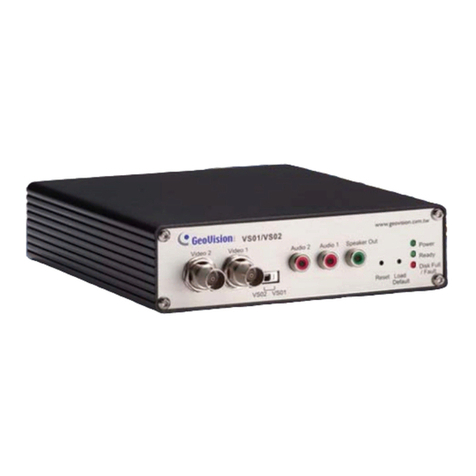
GeoVision
GeoVision Surveillance System V8.4 installation guide
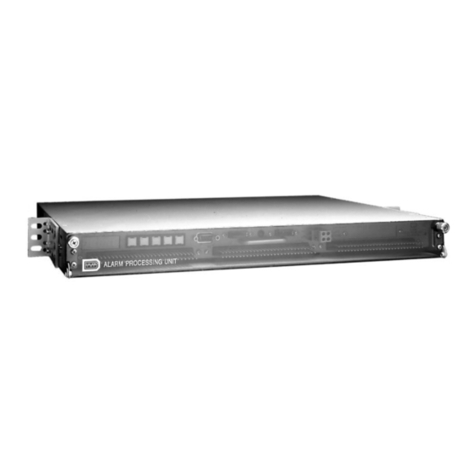
Dantel
Dantel 46131 Installation & operation manual

Test Equipment Depot
Test Equipment Depot BST-MG08 Manual instruction
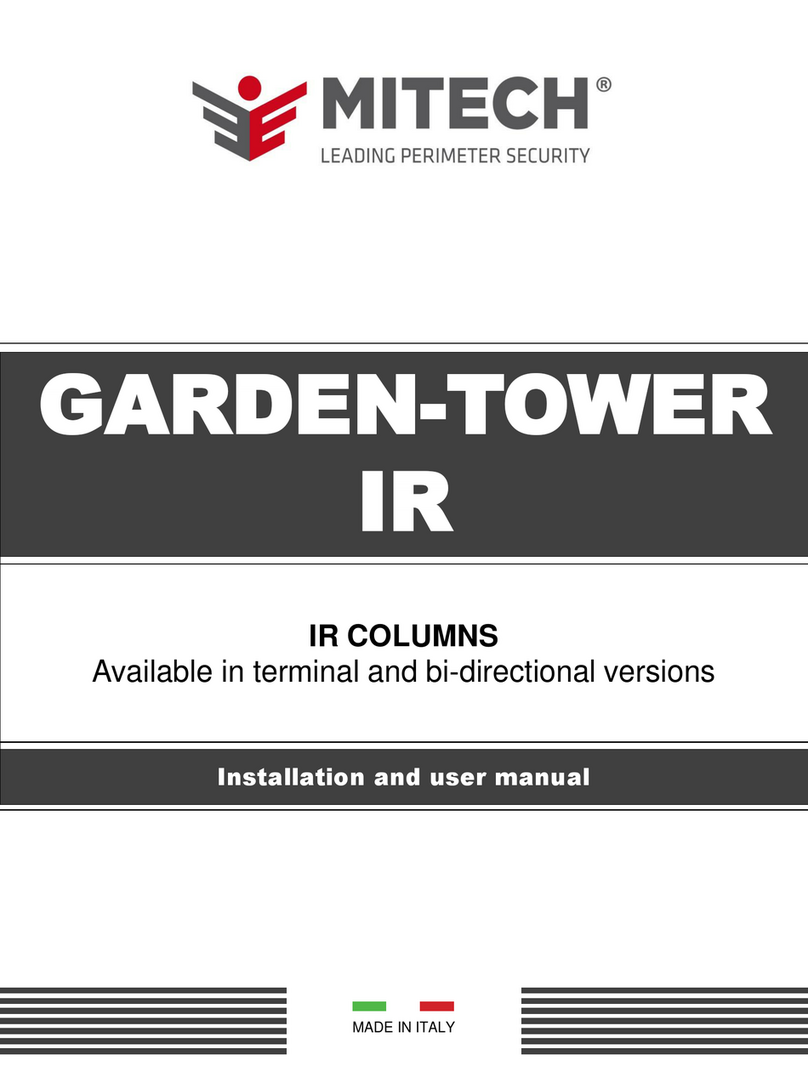
MITECH
MITECH TW102D Installation and user manual
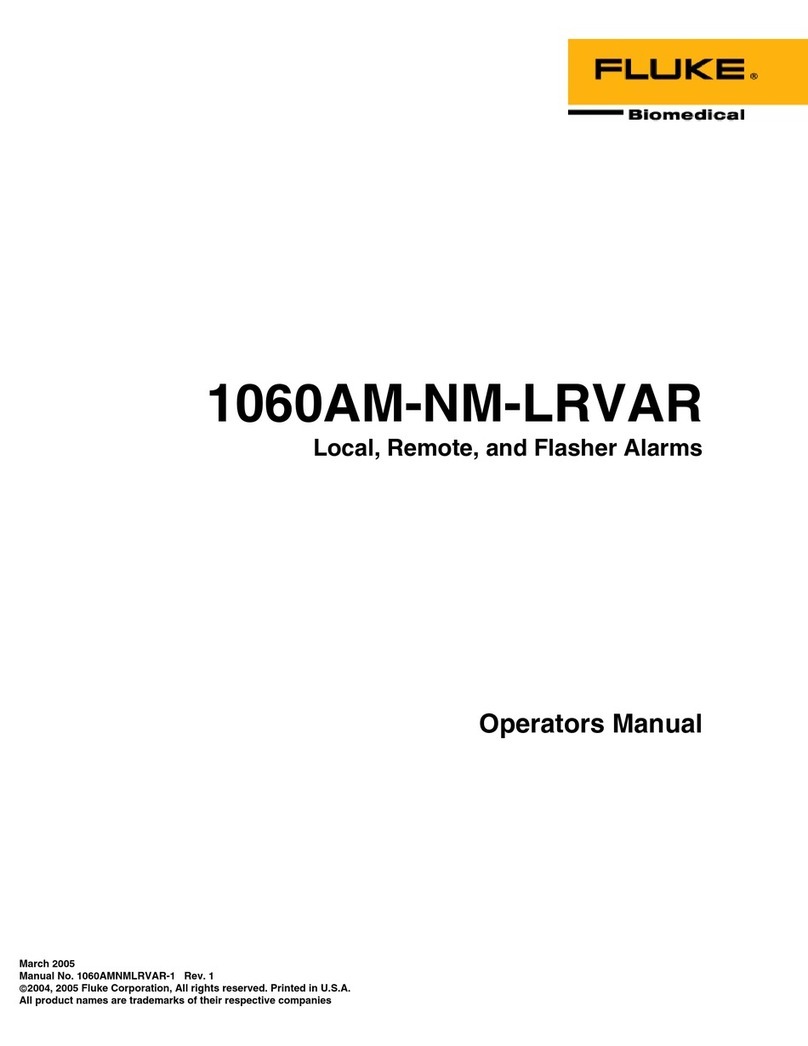
Fluke
Fluke 1060AM-NM-LRVAR Operators Operator's manual
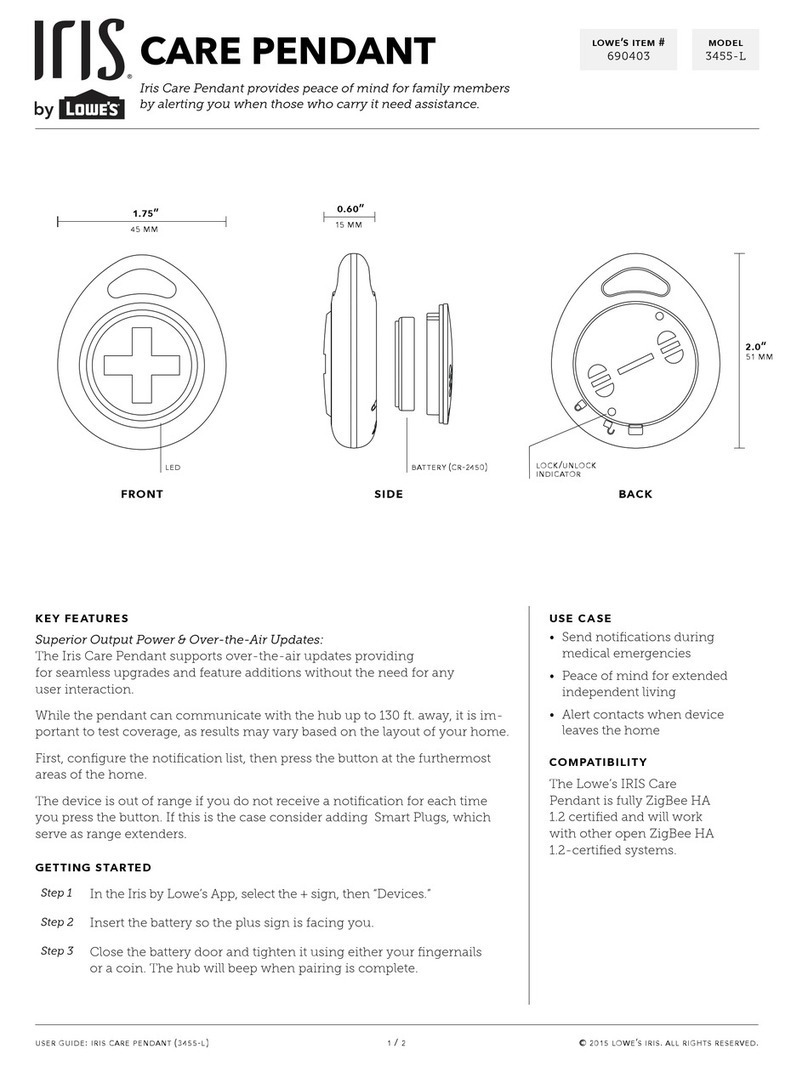
IRIS
IRIS Care Pendant user guide
